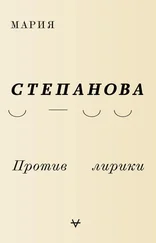Years later I came across the word in a book of memoirs. A short text, written in English in the 1950s, with nothing to do with the underground sparkle of foil and glass. The book described the period of pogroms in the south of Ukraine in 1919 through the eyes of a little girl, how the people in the village lay awake at night waiting for them to come, and then they did. It recounted how the women and children hid wherever they could, under fences and behind tree stumps, and then returned to their houses to wash and dress the murdered. The people living there had different ways of hiding, the hiding places necessary when flight is impossible: brick-lined secret rooms, underground holes, dugouts with whole families sheltering in them to sit out the pogrom. Sometimes they managed to escape notice. The memoir gave these hiding places a name. It was spelled with English letters, but the Cyrillic pulsed feverishly from within: sekreten .
*
In December 1936, in a New York gallery, Joseph Cornell showed his first film to a small audience. It was called Rose Hobart and it lasted about seventeen minutes. The lens of the projector was covered with blue glass that gave the image a lunar tint. The film was in slow motion and had no sound, as if the action was happening twenty years before, in the age of the silent movie.
The thirty-two-year old Salvador Dalí was in the audience. In the middle of the screening he jumped to his feet and shouted that Cornell had robbed him. He insisted that this idea had been in his subconscious, these had been his, Dalí’s, dreams, and Cornell had no right to use them as he wished.
After Dalí and his wife and muse Gala had left the gallery, the film continued: dark-blue Indigenous people in light-blue loincloths chased crocodiles down to the river with poles, wind fluttered the palm fronds, a woman of exquisite beauty moved toward something and looked at it closely, and then did this another few times. The sun was eclipsed, a bubble appeared on the surface of the water, round as an eye. A woman played with a monkey. Cornell showed none of his films after this one, although in some ways it had fulfilled its function, even on its own.
It’s curious that Dalí considered stolen what belonged to neither him, nor Cornell — at least not according to the definition of intellectual property. Everything in the film shown at the Julien Levy Gallery that day, with the exception of one or two shots, was taken from the adventure film East of Borneo , made in 1931 and lacking all artistic distinction. Reviewers of the original film noted the implausible plot, the incredible number of disasters and the wooden acting of the actress playing the lead role. She was called Rose Hobart and her high cheekbones and auburn hair was a combination potent enough to ensure her immortality.
The action-packed East of Borneo lasted 77 minutes. It was soon dropped and forgotten, and the reels of film could be hunted down in the shops selling antiques and second-hand goods — there were plenty of such shops around Times Square. Cornell, who collected up anything with even a passing relevance to his many love interests , had a particular fascination with Hollywood’s cast-offs: photos of auditions, film stills no one needed, memorabilia from b movies, all nameless starlets and aging divas. When he got hold of the film reel for East of Borneo he simply cut out the superfluous — anything that had nothing to do with Rose, or got in the way of seeing her. In his film, named in her honor, absolutely nothing happens — but then that is perhaps why it’s so captivating.
Instead of rushing about on a mission, the heroine, always dressed in a colonial white, is doomed to live out what might be called a “pure” organic existence. In the first scene the camera creeps through the jungle darkness toward a lit hut where Rose is asleep and we see her through a transparent curtain: she looks quite diminutive, as if we were looking at a scene in one of Cornell’s boxes. Her white hat lies on a table. She moves in the lit interior, her face is quite expressionless, and only her outfits change in Cornell’s edited frames: a dress, another dress, a soft white raincoat with rounded lapels. She speaks, pressing her hands to her breast, but we can’t hear anything: the film has been silenced. Some of her movements are repeated, some two or three times as if we are being asked to follow her every gesture in its flowerlike unfolding. For the most part this is a narrative of looking: the heroine freezes and looks, staggers back, looks again.
In one scene a lovesick raja draws back the curtain and offers the white woman the rare sight of a volcano erupting. They watch it together, like moviegoers on a dark balcony. He wears a turban of fine material and she wears a floor-length evening dress — and before them the fire and the darkness. In the same shot there is a huge parrot, one of Cornell’s favorite creatures.
Almost all Cornell’s films are constructed in this same way. Not one lasts more than twenty minutes and as a rule they are usually much shorter. They are rarely talked about, perhaps because they are so strange. In one of his films, called Centuries of June , the camera is held at the eye level of a nine-year-old and its gaze wanders endlessly, over a wooden staircase and up a wall, up at the sky through the leaves, at the knees of children digging in the earth, the white socks of a little girl walking away down a street. Another film tells the story of a children’s party (one of the characters is gnawing at a huge apple, which grows to the size of the moon by the end of the film). His films are a sequence of strange and wonderful images: a black hole opening in the sky; a circus acrobat in white hanging from like a fish on a line, swinging her legs in the darkness and circling like a bud opening. Branches crash and rustle, the arrow on a weathervane turns to point like a bird’s beak, seagulls clap their wings; a fairy girl, her hair loose about her shoulders, rides a white horse; and a terrifying caricature of a Red Indian pulls a black mask down over his face and throws knives at his gentle squaw without ever hitting her. In another film a blonde-haired girl runs about a park holding a ripped cream-colored umbrella. Pigeons bathe in the fountain, the pigeons suddenly fly up, a sullen girl stands in the middle of a square and doesn’t know where to turn. Water flows. It’s a little like something filmed from a phone — as if the camera was set to record and left to capture life in all its pointless capaciousness.
Cornell saves everything that is dear to him, rescuing it from the passing of time in the same way that a child might take scissors and cut a picture of a favorite prince or princess out of the page of a book. And in the same way, in 1930s Soviet Russia, people would repeatedly go to watch a famous film about a Red Army Commander. The film, named after its eponymous hero Chapaev, was the site for the last encounter between the old world and the new. There’s a scene of “psychological warfare” in which White Army soldiers advance, with cigarettes in their mouths, only to be mowed down by Chapaev’s machine gun. As they fall, they are replaced by new soldiers with cigarettes in their mouths. The poet Mandelstam, exiled in Voronezh, describes this scene: the men come out, a cigarette “in the death grip of their teeth / machine-pressed officers / in the open groin of the heath.” The White Army men march in parade formation to the beat of a drum and they fall silently, one by one, to the stutter of machine gun fire. “How beautiful they are,” says one Red Army soldier to another. The White Army extras for this scene were dragged out of their oblivion to demonstrate once again that the victor is always right, and the beautiful are always the vanquished. The marchers included the poet Valentin Stenich, the first Russian translator of Ulysses . He was executed in 1938. It’s said he did not conduct himself with honor at his interrogations. God forbid anyone should find out how we conduct ourselves at ours.
Читать дальше











